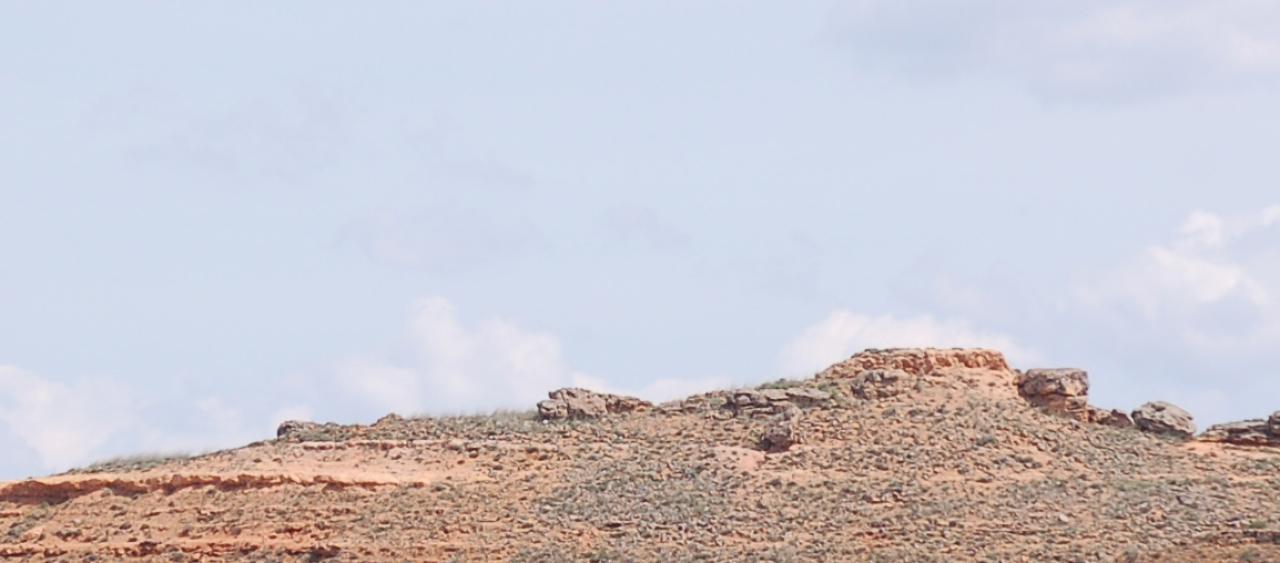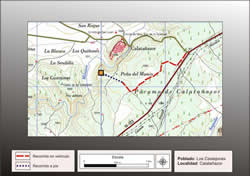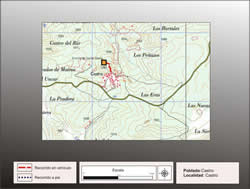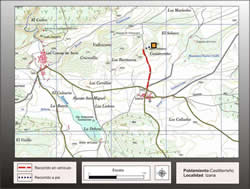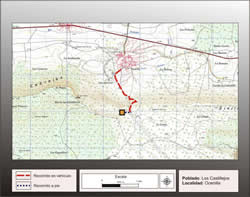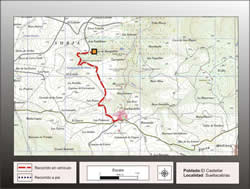

Getting there
From Santa Maria de Huerta will take a track which passes under the A2, to turn right and take a track towards Zaragoza, parallel to the A2, to the boundary between Soria and Zaragoza, walk along the edge tracing the left slope of the road you come to the site Celtiberian.
Situation and location
The site is situated on a hill of irregular topography on the edge of the province of Soria and Zaragoza, at kilometer 182 of the old N-II, overlooking the Jalon valley towards Arcobriga (Monreal de Ariza) and its north side that comes from Glen Almaluez. It is a strategic enclave, mainly for the control of a large territory.
Research
It was excavated and described by Aguilera y Gamboa, Cerralbo Marquis in 1909, which he called "cyclopean fort. " Check this site later Taracena, in his letter Archeological Soria (1941) and was eventually caught the attention of Marian Arlegui, the publication of "The Jalon, means of communication" (1990).
Phases of occupation
Below celtiberica fortification, the remains found Cerralbo Marquis ((lanceolate flint, a flint flake retouched, a sheet of copper, clay vessels tosquisimos) to be attached to Chalcolithic period.
Above this low occupancy later built the powerful fortress celtiberica period, whose remains are visible.
Castle Celtiberian:
This fortification was installed at the highest point of the hill, used to build large stone blocks, rudely cut, hence the name "cyclopean fort" that he gave his excavator.
-The fortified:
The difference between a fortified tower or rectangular and vertical surfaces (22.5 m by 8.70 m) with a small entrance at the southeast corner, which is accessed by three steps.
The walls were built with large stones, in some cases up to 3 m by 0.90 m in height, who settled in dry and shod with smaller stones, preserved in some places up to 3 m in height.
-The Pit:
separated from two meters on the north side of the fortified enclosure and is 4 m wide, was made ??to remove the stone for the construction of the tower.
-The wall:
On the north side, most vulnerable, there are remains of what could be the wall of the town.
The interior space and chronology
Inside the stone walls are observed to be applicable to rectangular houses as well as on the western slope. In one of these rooms was found a large piece of red earthen jar painted with concentric circles celtiberica bill celtiberica. Although the tower and played Taracena Iberian prior to the third century BC, and the rear enclosure and attached as Celtiberian period, the III-II century BC, we believe that the whole appropriate to this moment.
Contacts and schedules
This site is free and is not put up for the visit
Bibliography
- Aguilera y Gamboa, E. (1909): High Jalon, archaeological discoveries, Madrid :61-70.
- Taracena, B. (1941): Archaeological Charter Spain. Soria, Madrid :148-149.
- Arlegui, M.A. (1990): Introduction to the High Jalon Celtiberian groups. The communication channel Jalon (lecture). Numancia Museum, Junta de Castilla y Lenon, Soria.


